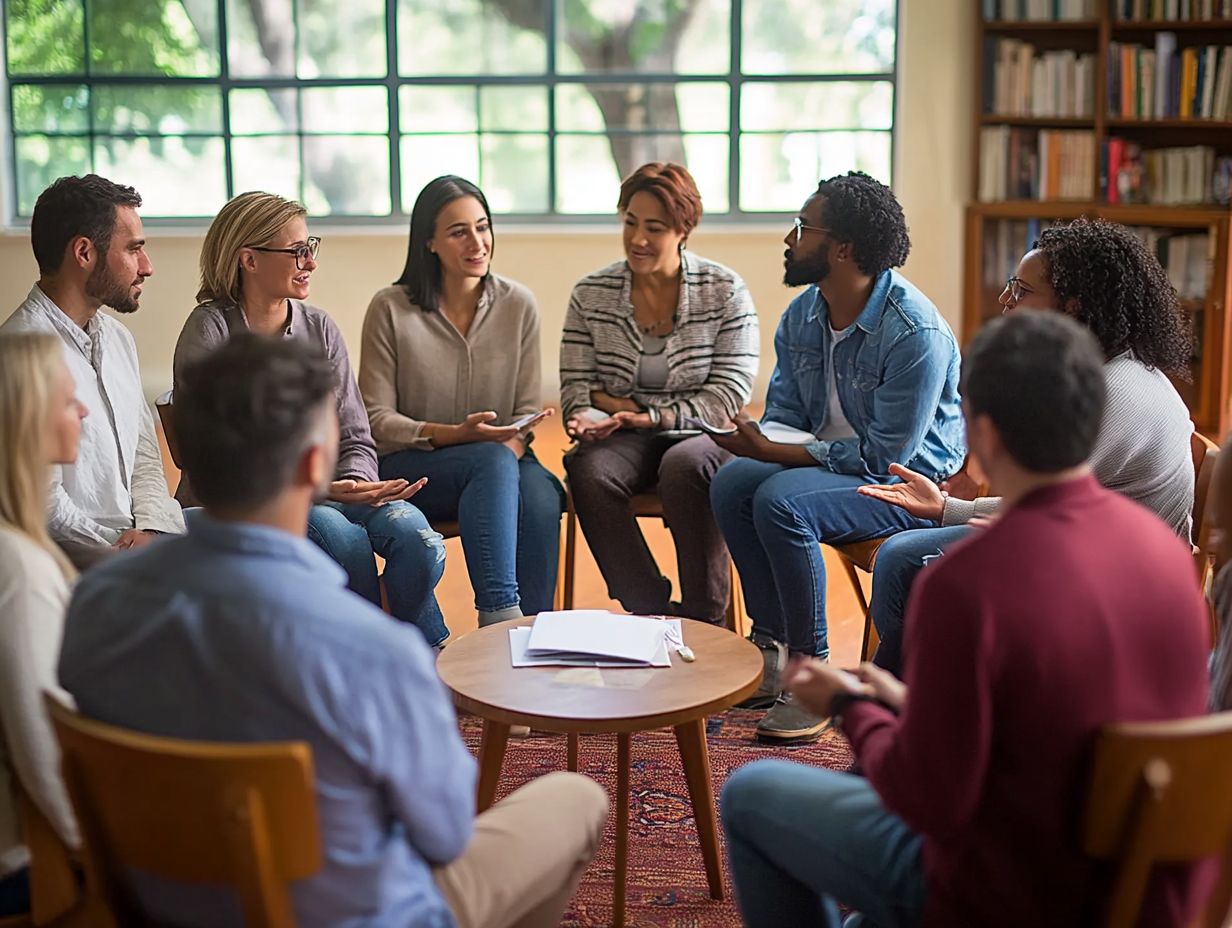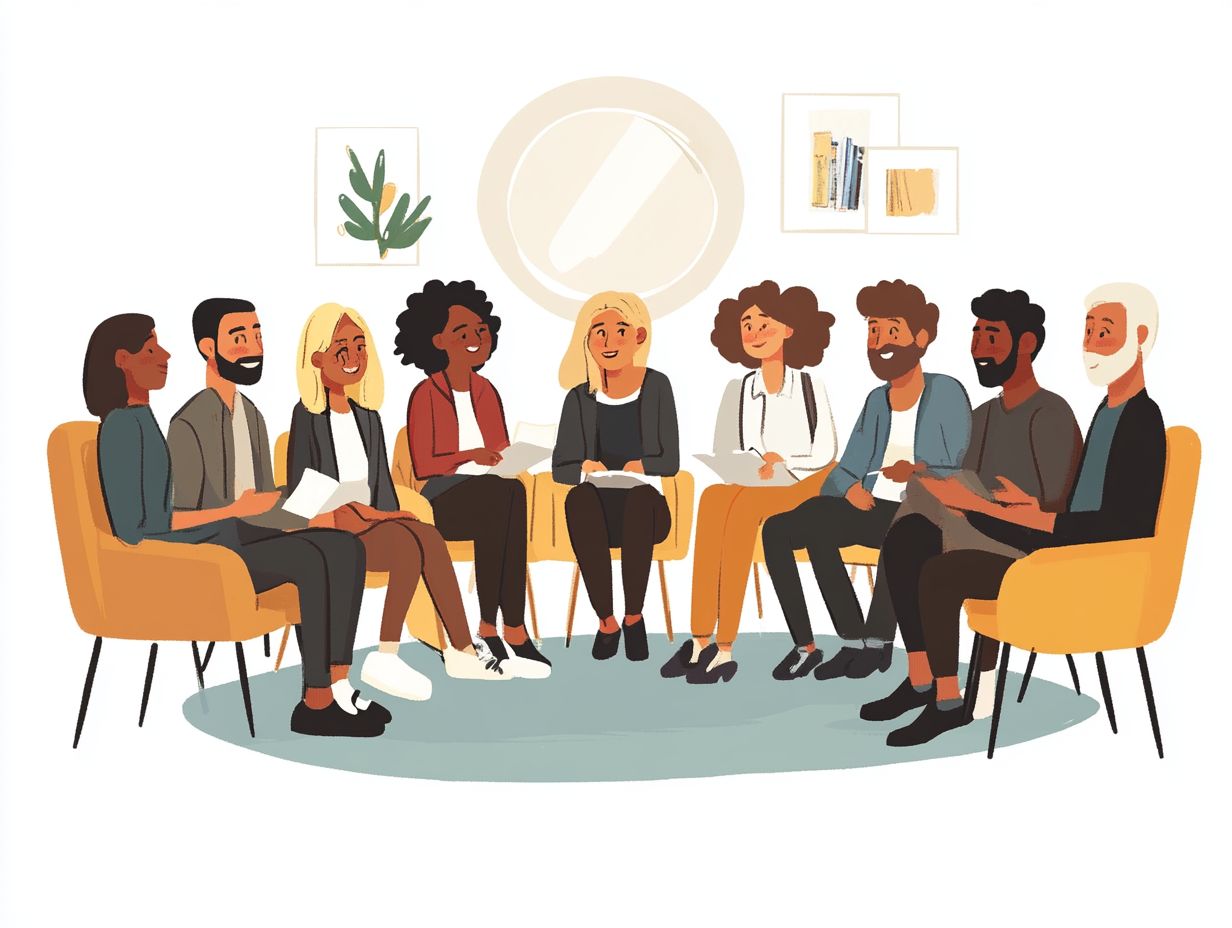How to Create a Supportive Community?
In today’s fast-paced world, the significance of a supportive community is paramount. A strong community enhances your life in numerous ways, from nurturing personal growth to serving as a safety net during challenging times.
This exploration delves into the myriad benefits of having a close-knit support system while offering practical insights on how to build, maintain, and navigate the complexities of community life.
Discover the essential strategies for fostering an inclusive environment where everyone has the opportunity to thrive.
Contents
Key Takeaways:

- Building a supportive community begins with identifying common interests and goals among members to foster a sense of belonging and unity.
- Effective communication and conflict resolution are crucial in creating a supportive community, promoting healthy relationships and addressing any issues that may arise.
- Nurturing relationships and encouraging participation among members is essential in maintaining a supportive community and fostering a sense of support and belonging.
Understanding the Importance of Community
A supportive community cultivates personal growth and emotional resilience, offering you authentic connections that enhance your relationships and overall well-being.
Through community efforts and joining forces, communities can tackle a range of social issues, elevating public awareness and igniting a movement for change. By participating in community forums and engaging with like-minded individuals, you can share your experiences and provide support to one another as you navigate the emotional work of life’s challenges.
Benefits of Having a Supportive Community
Having a supportive community brings a wealth of benefits that elevate both your individual and collective well-being. It fosters positive interactions and encourages mutual growth among all members.
In this nurturing environment, you gain invaluable emotional support, allowing you to share your challenges and triumphs with those who truly understand. Within these social circles, you ll often find passionate readers and participants discovering common ground, leading to shared experiences that deepen connections.
By engaging in discussions and activities together, you collectively cultivate healthy habits, whether it s regular exercise or mindfulness practices. This shared commitment not only amplifies motivation but also instills a sense of accountability, making it much easier for you to embrace positive lifestyle choices.
Ultimately, a supportive community acts as a crucial catalyst for your personal development and overall happiness.
Building a Supportive Community
Creating a vibrant community starts with a smart strategy that highlights the importance of identifying shared interests and goals among its members.
By fostering collaboration and nurturing group dynamics, you create an environment where trust can flourish.
Identifying Common Interests and Goals

Identifying common interests and goals is essential for you to form a cohesive social group, facilitate emotional work, and promote personal growth among community members.
Engaging in open dialogues allows you to express your passions and aspirations, creating a pathway for a deeper understanding of shared values. By recognizing these collective goals, you and your fellow community members can forge stronger bonds, enhancing overall group cohesion.
When your individual dreams align with the community s objectives, it fosters a profound sense of belonging and gives the power to empower.
This alignment not only inspires collaboration but also encourages diverse perspectives, enriching the community’s experience and enabling everyone to support one another more effectively. Pursuing common interests transforms the social fabric, making it more resilient and vibrant for all involved.
Don t wait! Start connecting with like-minded individuals today!
Effective Communication and Conflict Resolution
Effective communication and conflict resolution are crucial for building a thriving community. They ensure that everyone participates, foster relationship-building, and develop trust among members.
To achieve this, you can adopt strategies like active listening. Active listening means really tuning in to what someone is saying and showing you understand. This practice not only validates emotions but also encourages a culture of openness and honesty in discussions.
Showing empathy allows you to understand different perspectives, making it easier to bridge gaps in understanding. When conflicts arise, being assertive is important. It gives you the power to express your needs and boundaries clearly, which helps reduce misunderstandings.
By weaving these elements into your daily interactions, you contribute to a community that cultivates a safe space where dialogue can flourish. This results in stronger connections and more effective problem-solving.
Maintaining a Supportive Community
Maintaining a supportive community demands continuous effort to nurture relationships and promote active participation. By fostering an environment where members feel valued and engaged, you enhance their experience. You also align everyone toward shared objectives.
This commitment cultivates a vibrant community that thrives on collaboration and mutual respect.
Nurturing Relationships and Encouraging Participation
Nurturing relationships and encouraging participation are essential for creating an environment where mutual support and authentic connections can truly flourish among community members.
To achieve this, implement various strategies that promote open communication and collaboration. Community forums act as a valuable platform where individuals can share experiences, ask questions, and offer advice. This allows for deeper connections to form.
Using social media channels boosts these interactions and keeps the excitement going! It also enables you to celebrate each other s achievements and engage in discussions in real time. Engaging activities, like challenges or events, can further enhance community involvement, bringing people together and cultivating a sense of belonging among diverse participants.
Dealing with Challenges in a Community

Navigating challenges within a community is unavoidable, but it also opens doors to enhance group dynamics. By tackling conflict directly and fostering an environment of inclusivity for every member, you can transform these challenges into opportunities for growth and unity.
Addressing Conflict and Maintaining Inclusivity
Addressing conflict effectively while ensuring inclusivity is essential for nurturing healthy behaviors and enhancing group participation within your community.
By adopting strategies that promote open dialogue, you create a space where community members can express their concerns without the fear of judgment. This approach not only aids in resolution but also fosters an environment rooted in mutual respect.
Establishing trust is paramount, as it enables individuals to engage authentically, knowing that their perspectives are valued. When you approach conflicts with empathy and transparency, the atmosphere transforms into one that celebrates diversity and encourages collaborative problem-solving.
Involving a variety of voices in conflict resolution leads to more innovative solutions, reinforcing a sense of belonging and shared responsibility within the community.
Check out this video for more insights on building supportive communities!
Frequently Asked Questions
What is a supportive community?
A supportive community is a group of people who come together to provide emotional, social, and practical support to one another.
Why is it important to create a supportive community?

Creating a supportive community is important because it helps individuals feel connected and supported. This can improve their overall well-being and sense of belonging.
Join us in building a supportive community today!
How do I start creating a supportive community?
Start by connecting with people who share similar interests. Express your desire to build a supportive community.
Join groups that align with your vision.
What are some ways to foster a supportive community?
Actively listen to others. Offer help when needed.
Promote inclusivity and diversity.
How can a supportive community benefit individuals?
A supportive community reduces loneliness. It provides a sense of belonging.
It also offers a safe space for sharing experiences.
What are some challenges to creating a supportive community?
Finding committed individuals can be tough. You may face communication barriers.
There can also be conflicts within the group.






